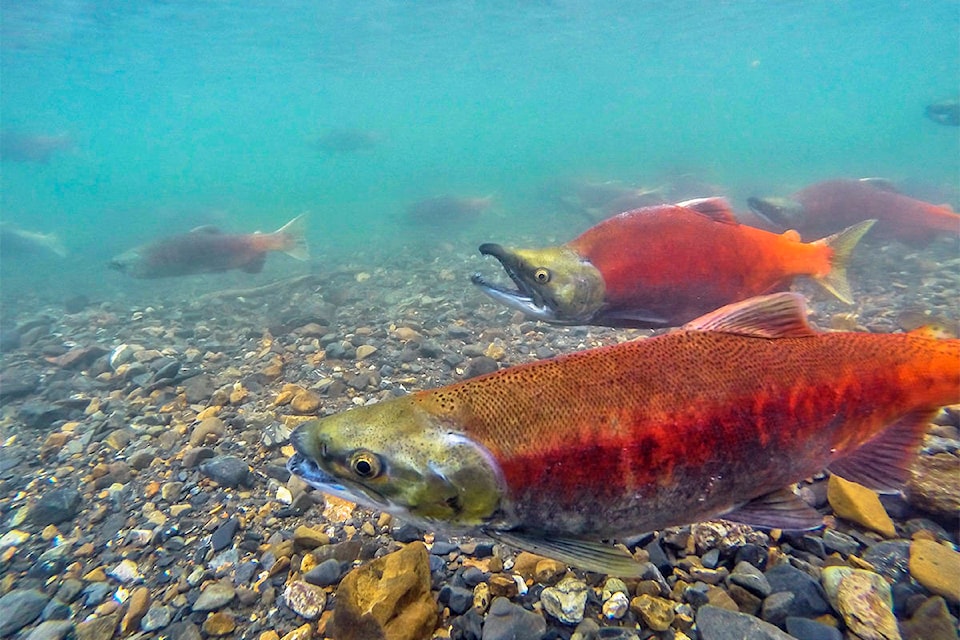The kokanee salmon of Kathleen Lake — the most northern population of kokanee in Canada — appear to be on the upswing again.
The fish, which are almost identical to sockeye salmon save for the fact that they’re land-locked, are a known “boom and bust” population, Parks Canada ecologist team leader Carmen Wong said in an interview Sept. 10.
Historically, about 3,600 kokanee have returned to their spawning grounds at Sockeye Creek, a narrow channel within the Kathleen Lake watershed that’s about a two-day walk from the Kathleen Lake boat launch.
This year, Wong said, she and her team counted 2,963 fish — not quite the historical average, but an improvement over the past few years.
The kokanee, which have been studied since 1976, were relatively stable until the early 2000s, when the population began to crash and reached a low of only 20 spawners in 2009.
Things began looking up again in 2014, when the number of fish spawning soared back into the quadruple digits, reaching more than 5,000 in 2016.
However, 2017 saw the spawning numbers plunge back into the hundreds, with only 385 kokanee counted in 2018.
Last year saw 1,700 fish return.
“I guess our message is we’re cautiously optimistic because numbers are higher; they’ve been increasing in the past couple of years,” Wong said.
However, the fish still have a lot to contend with. Among the chief concerns is the impact the earlier population crashes had on the genetic diversity of the salmon.
“They may not have the full range of genetic variation to deal with what nature might throw at them because they went through this genetic bottleneck,” Wong explained.
Researchers are also still looking into what exactly has been causing the “boom and bust” cycle with the population.
Although temperature and water flow are likely factors, Wong said the equation is further complicated because it appears that sediments in the water may play a role, too.
Spawning numbers are low when water levels are high and the weather is hot, she explained, but it’s not necessarily warmer water that might be having an impact. Instead, warm air may be triggering glacier melt and causing more sedimentation in the creek where the kokanee spawn, something that can also be caused by heavy rainfall.
“After that big rainy long weekend we had in August, there was this sediment plume coming just right into the spawning beds and we know from other work that sediment’s not very good during spawning time for salmon,” Wong said.
This season, like every season, researchers have travelled to Sockeye Creek to count fish and also collect water samples to analyze for sediment loads and dissolved metals. They’ve also been looking at fish health, testing kokanee carcasses and eggs for traces of any toxic metals.
The next two years, Wong said, would be an exciting time for Kathleen Lake kokanee research as her team builds up enough data and information to get a bigger-picture look at the population.
In the meantime, Wong said her team is trying to remind people that while kokanee may be plentiful in stocked lakes around Whitehorse, possession of Kathleen Lake kokanee, which could be confused for rainbow trout to the untrained eye, is prohibited and has been since 2004.
Champagne and Aishihik First Nations (CAFN) citizens are still allowed to fish for kokanee, but the First Nation government has discouraged them from doing so for a number of years now. CAFN did not respond to a request for comment before press time.
Contact Jackie Hong at jackie.hong@yukon-news.com
